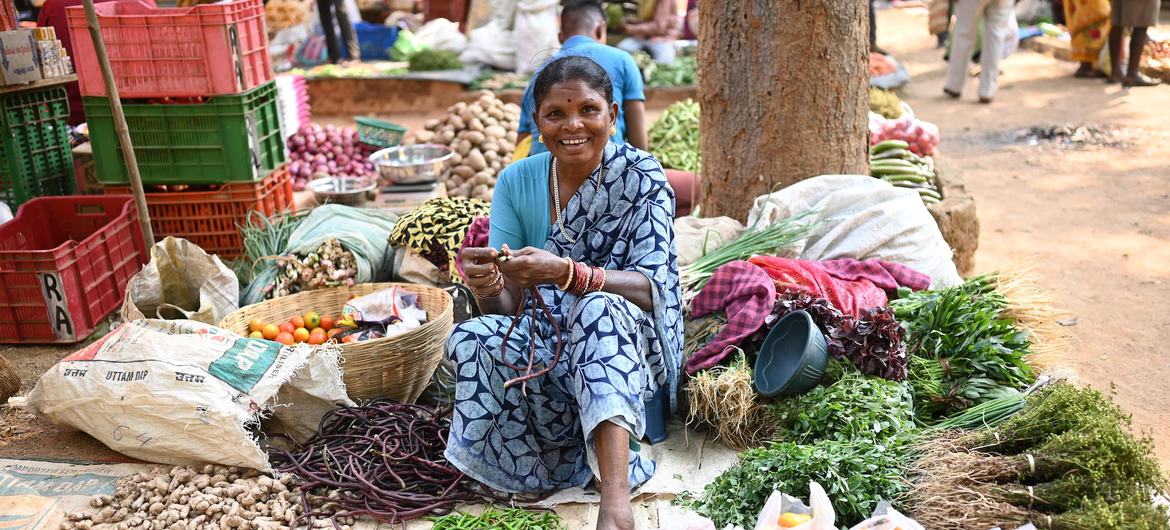The UN Annual Commission on Women’s Status (CSW) meets to address generalized inequalities, violence and discrimination women continue to face around the world.
This year, the commission will meet at the UN headquarters in New York from March 10 to 21.
Here are five things you need to know:
1. 80 years of models
Days after the inaugural meetings of the UN General Assembly in 1946 heard Roosevelt read an open letter addressed to “The Women of the World,” the committee’s work began.
Roosevelt had called “on the world’s governments to encourage women everywhere to participate more in national and international matters and in women who are aware of their opportunities to present themselves and share the work of peace and reconstruction, as they did in war and resistance.”
The UN Economic Affairs and Social Affairs Commission (ECOSOC) promptly established a subcommittee. Its six members – China, Denmark, Dominican Republic, France, India, Lebanon and Poland – were in charge of evaluating “women’s status problems” to advise the UN Human Rights Commission, a UN forerunner Human Rights Council.
From the beginning, there have been requests for action, including the prioritization of political rights, “how little progress could be done without them”, along with the recommendations for improvements in the educational, social and economic fields of the civilian, according to the first subcommittee report, which also asked for a UN women’s conference “to promote the program”.
In June 1946, the Commission on the status of women, one of the subsidiary bodies of ECOSOC, became formally. From 1947 to 1962, CSW focused on establishing standards and formulating international conventions to change discriminatory legislation and promote global awareness of women’s issues.
UN Subcommittee members on women’s status gather at Hunter College in New York in 1946. (File)
2. International reference agreements were reached
Dated from the early days of the commission, its growing association contributed to some of the most agreed international conventions in the history of the UN.
Here are just a few.
Learn about more past and gift CSW sessions here.

A woman in Kenya receives training in an engineering workshop.
3. More countries, more needs
With increasing evidence of UN and growing members in the 1960s that women were disproportionately affected by poverty, CSW focused on the needs of community and rural development, agricultural work, family planning and scientific and technological advances. It also encouraged the UN system to expand technical assistance to promote the advancement of women, especially in developing countries.
The UN declared 1975 the International Year of Women and summoned the first world conference on women held in Mexico. In 1977, the formally recognized UN International Women’s Dayobserved annually on March 8.
In 2010, after years of negotiations, the General Assembly adopted a resolution consolidating the organization’s sections and related departments at the UN entity for gender equality and women’s empowerment (UN Women), which continues to collaborate closely with CSW.

A woman sells forest products in a local market in India.
4. Facing new challenges
CSW’s annual sessions address and evaluate emerging issues, along with progress and gaps in the implementation of the Beijing platform for action. The States -Member agree in other steps to accelerate progress.
The commission addressed challenges such as climate change, gender -based violence, and ensuring the total participation of women in decision making and sustainable development strategies.
Each year, CSW sends its traded conclusions agreed to ECOSOC for Action.
In order to reach all women and leave no one behind, CSW also contributes to the accompaniment to the 2030 Agenda For sustainable development accelerate gender equality and women’s empowerment.

A woman fixes a laptop on her phone and computer maintenance in Taiz, Yemen.
5. Walking the conversation
Solutions to end female poverty are widely recognized, from investing in policies and programs that address gender inequalities and increasing the agency and leadership of women to the closure of gender gaps in employment.
This would raise more than 100 million poverty women and girls, create 300 million jobs and boost Gross Domestic Product Per capita (GDP) by 20 % in all regions.
The 2025 session (#CSW69) will meet at the UN headquarters from March 10 to 21, with its 45 members and thousands of participants from around the world.
The main focus will be the review and evaluation of the implementation of the Beijing Declaration and Action Platform, which will include an assessment of the current challenges that affect their implementation and the realization of gender equality and the empowerment of women and their contribution to the total performance of the 2030 Agenda.



